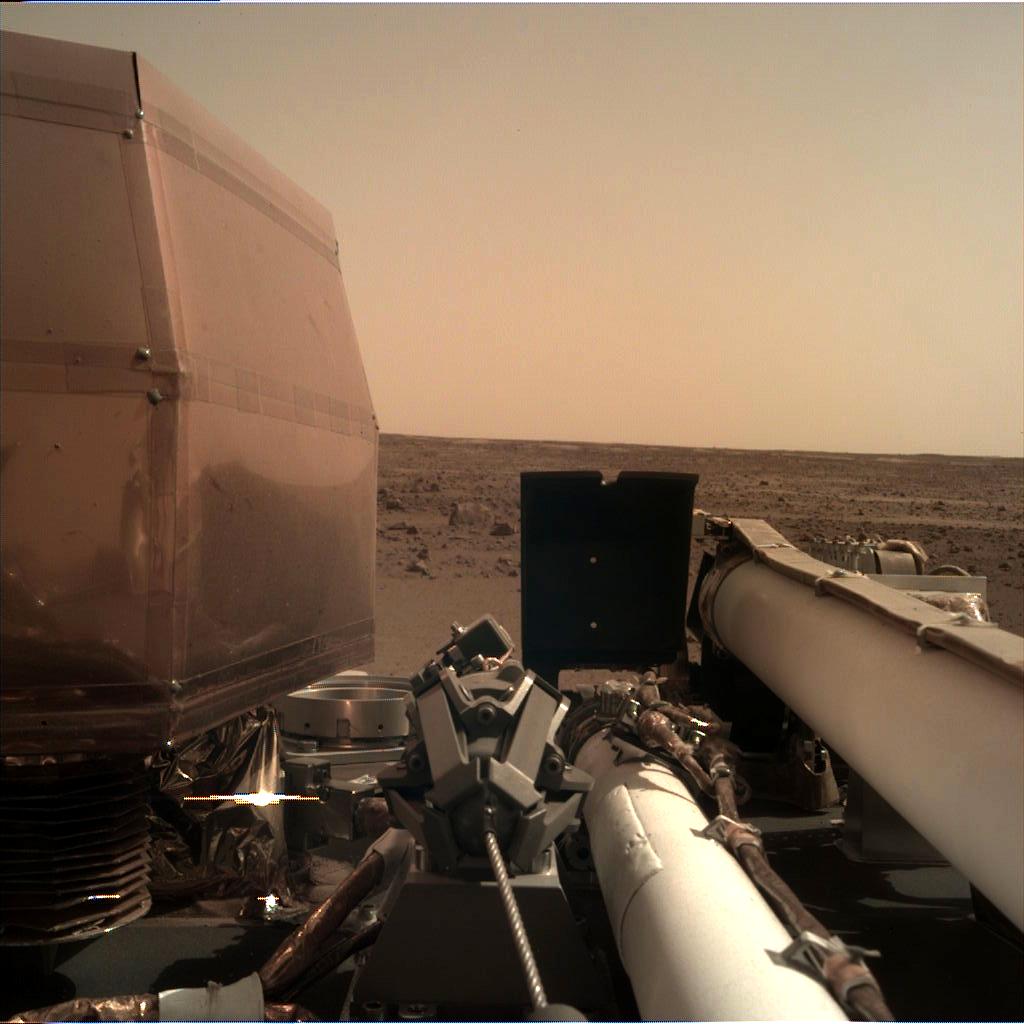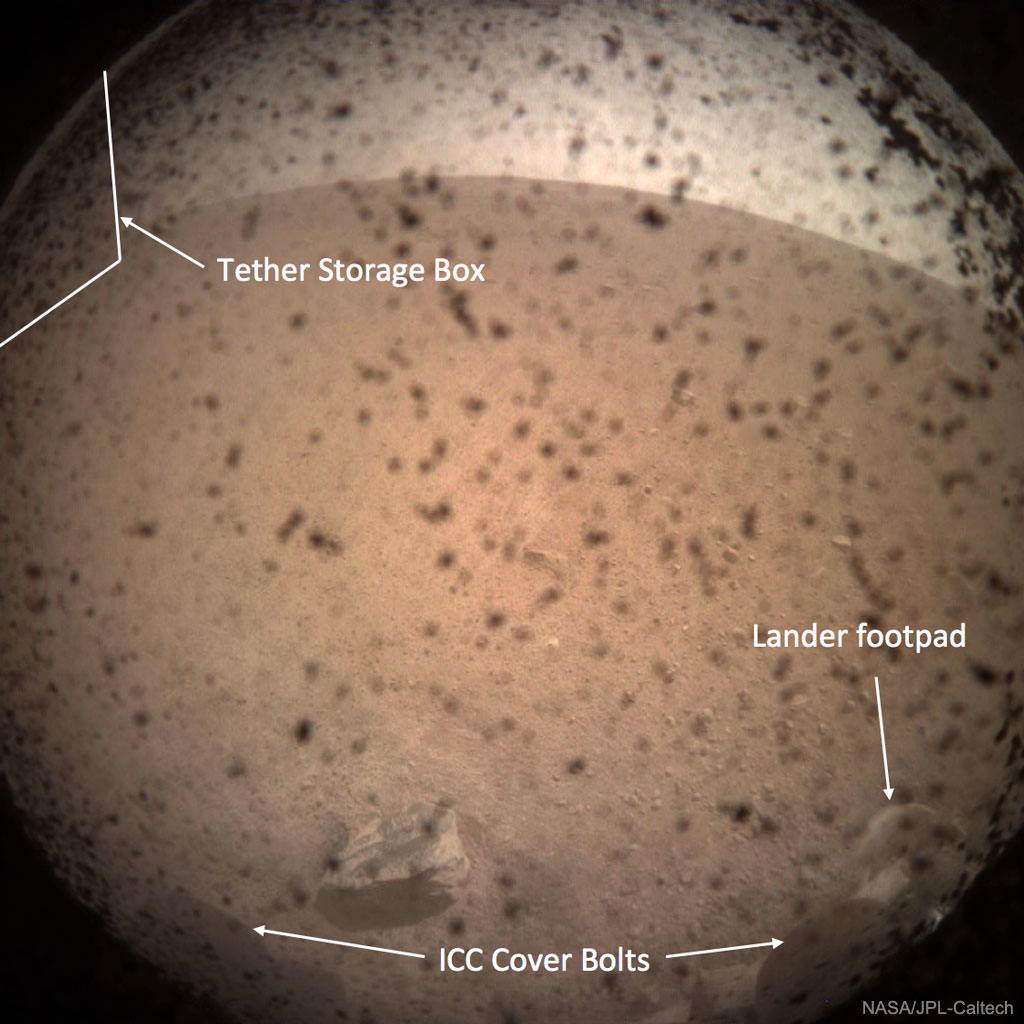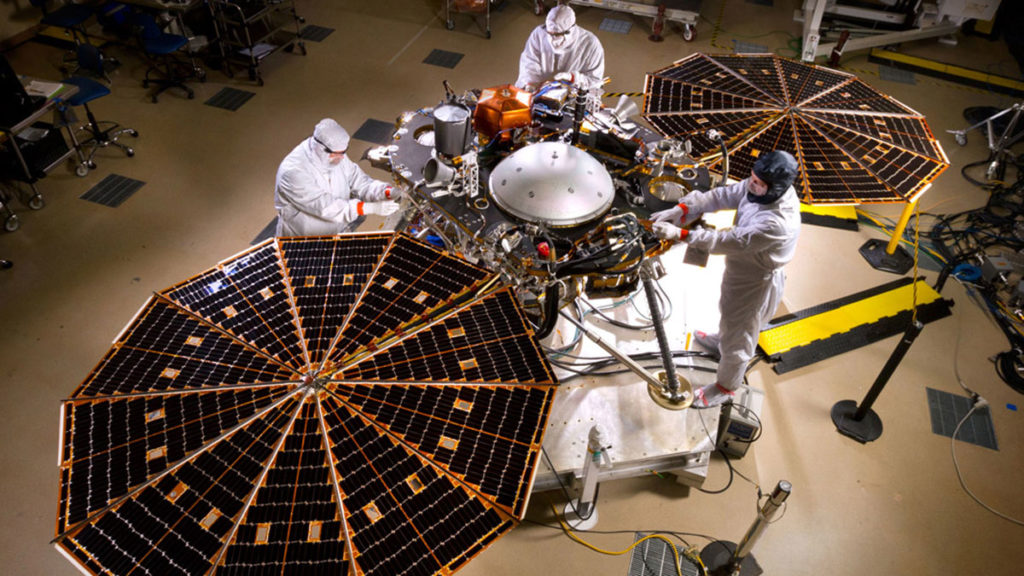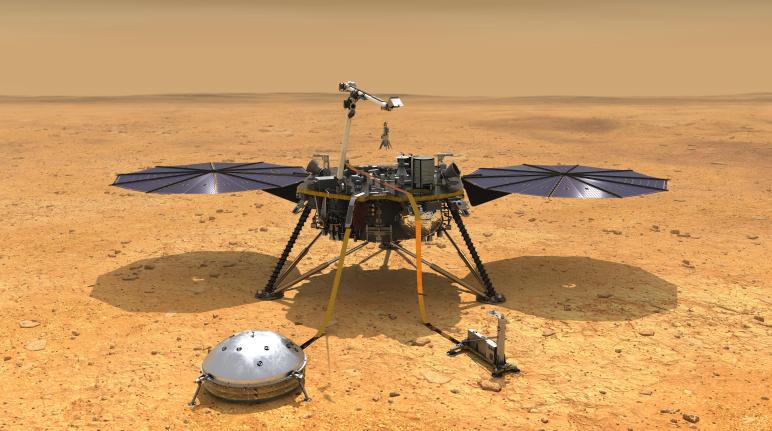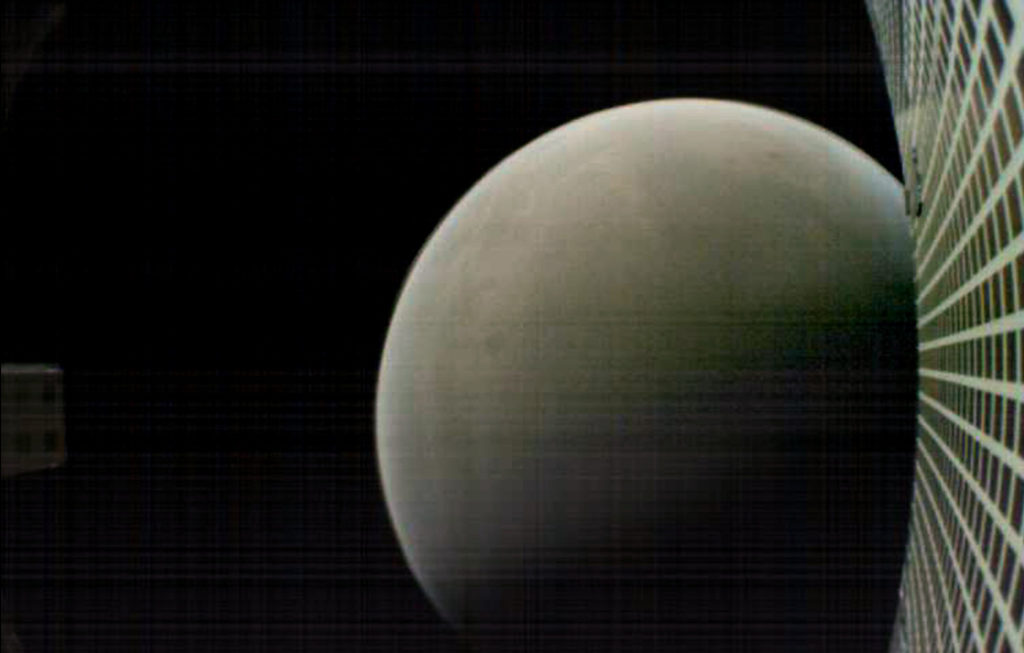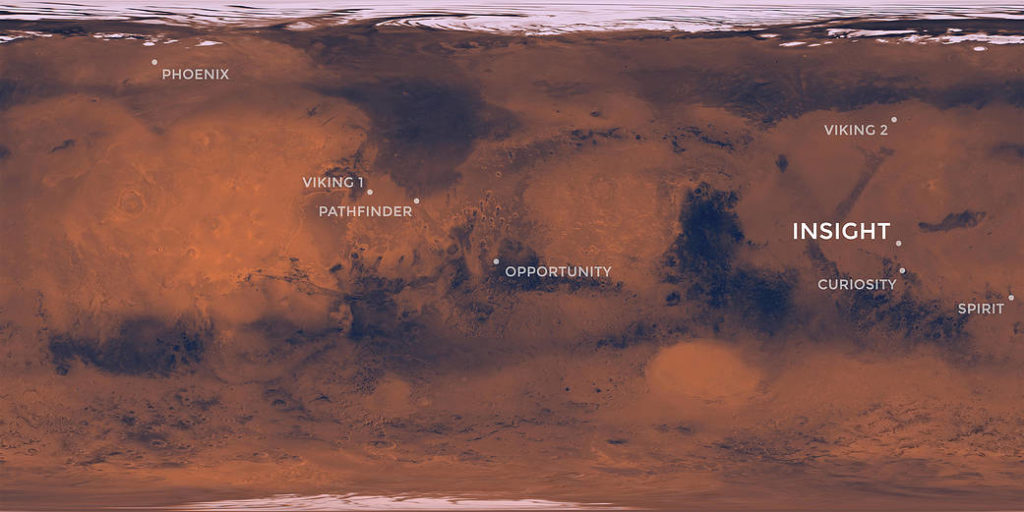Ken Kremer —SpaceUpClose.com &
RocketSTEM –27 November 2018
CAPE CANAVERAL,
FL – Mars newest resident, NASA’s InSight Lander, successfully deployed her twin solar arrays after surviving the harrowing ‘7
minutes of Terror’ descent through the planets thin atmosphere and safely soft landing
on the smooth, vast expanse of the alien Red Planet locale named ‘Elysium Planitia’ – and snapped a second picture proving she was ‘stayin alive’!
“There’s
a quiet beauty here. Looking forward to exploring my new home. #MarsLanding,” the InSight team tweeted along with that 2nd incredibly clear and beautiful
photo shown above – late Monday evening, Nov. 26 on landing day.
Thus
far the mission has been a complete 100% success!!
The
new photo – taken by the robotic arm camera – shows the robotic arm and other
instruments on the landers deck. Unlike
the first photo (see below) it’s not obscured by lots of dust thrown up during
the landing despite also being protected by a transparent lens cap.
InSight’s mission is to study the deep
interior of the fourth rock from the sun and unravel Mars and Earth evolution
since they formed 4.5 Billion years ago.
“Our Mars Odyssey orbiter
phoned home, relaying news from @NASAInSight
indicating its solar panels are open & collecting sunlight on the Martian
surface. Also in the dispatch: this snapshot from the lander’s arm showing the
instruments in their new home,” NASA tweeted.
Unfurling the power generating
and life-giving solar wings was the next critical required step towards ensuring
her survival for a planned 2 year mission – after completing the harrowing
entry, descent and landing propulsive touchdown at 2:54 p.m. EDT, 11:54 a.m. PST, Monday, Nov 26. Thereby concluding a
7 month, 301 million mile (484 million km) interplanetary journey from Earth.
“Aaah…soaking up the
Sun with my solar panels. After a long flight, and thrilling #MarsLanding, it feels great to get a good stretch and recharge my
batteries. (Like, literally.) It’s just what I’ll need to really start getting
in tune with #Mars.”
were ‘catching the suns rays’ finally came some five and a half hour after touchdown
via signals relayed by NASA’s Mars Odyssey orbiter at about 8:30
p.m. EST 5:30 p.m. PST Monday, Nov. 26, 0130 Nov. 27 GMT, after it overflew InSight’s landing site.
indicating that its solar panels are open and collecting sunlight on the
Martian surface,” NASA reported.
Mars Odyssey orbiter relayed
the signals, which were received on Earth at about 5:30
p.m. PST (8:30 p.m. EST). Solar array deployment ensures the spacecraft can
recharge its batteries each day. Odyssey also relayed a pair of images showing
InSight’s landing site.”
tonight now that we know the spacecraft solar arrays are deployed and
recharging the batteries,” said Tom Hoffman, InSight’s project manager at
NASA’s Jet Propulsion Laboratory in Pasadena, California, which leads the
mission, in a statement.
tomorrow begins an exciting new chapter for InSight: surface operations and the
beginning of the instrument deployment phase.”
InSight sports a wingspan of 19 feet 8 inches (6 meters) with
solar panels deployed and a width of 5 feet 1 inch (1.56 meters) (lander deck
diameter).
arrays are 7 feet (2.2 meters) wide.
On a clear Martian day the panels are estimates
to provide about 600 to 700 – enough to
power a household blender and plenty to keep its instruments conducting science
on the Red Planet, says the team.
“Even when dust covers the panels — what is
likely to be a common occurrence on Mars — they should be able to provide at
least 200 to 300 watts.”
Soon the team will unstow
the robotic arm in preparation for placing the 2 international science
instruments from Germany and France – HP3 and SEIS – onto the surface after using camera images
to select the best spots for safety and science gathering.
in an international science mission. Loaded aboard are the two primary science
instruments provided by European partners from France and Germany: The SEIS
seismometer and HP3
heat flow measuring instrument.
The
SEIS seismometer instrument is equipped with a trio of incredibly precise seismometers
to detect marsquakes and was provided by the Centre National d’Études Spatiales
(CNES) – the French national space agency equivalent to NASA.
The
other instrument measuring heat flow from the Martian interior is provided by
the German Aerospace Center (DLR) and is named Heat Flow and Physical Properties
Package (HP3).
The HP3
hammering mole will pound about 5 meters (16 feet) deep into Mars pulling
the science heat flow cable tether along to make heat flow and temperature measurements. It will pause multiple times along the way down
to make detailed measurements at different depths of heat flow from the planets
core.
Meanwhile one of the briefcase sized Mars Cube One
(MarCO) minisatellites
which transmitted all the real time EDL data on landing day Monday, also
snapped a farewell photo- see below from MarCO-B.
Odyssey, it took only 8.1 minutes from MarCO, the time it takes for radio
signals traveling at light speed from Mars to Earth across a distance of 91 million miles (146 million kilometers).
The pair traveled to Mars along with but
separately from InSight following launch from Earth on a ULA Atlas V rocket 7
months ago.
InSight is NASA’s
first mission to Mars surface in 6 years since the Curiosity rover safely touched
down by the skycrane maneuver in 2012 – to begin a minimum 2 year long mission to
study the heart of Mars and elucidate the deep interior of the Red Planet like never
before.
The landing location at Elysium Planitia just north of the equator is about 340
miles (550 kilometers) away from Gale Crater – where NASA’s Curiosity rover
landed in 2012.
InSight, which stands for Interior Exploration
using Seismic Investigations, Geodesy and Heat Transport, is designed to study the deep interior of
Mars.
The $850 million seeks the fingerprints of the processes that formed the
rocky planets of the solar system.
InSight
is funded by NASA’s Discovery Program of low cost, focused science missions
along with the science instrument funding contributions from France and
Germany.
continuing onsite coverage of NASA, SpaceX, ULA, Boeing, Lockheed Martin,
Northrop Grumman and more space and mission reports direct from the Kennedy Space
Center, Cape Canaveral Air Force Station, Florida and Wallops Flight Facility,
Virginia.
Stay tuned here for Ken’s continuing Earth and Planetary science
and human spaceflight news: www.kenkremer.com –www.spaceupclose.com – twitter
@ken_kremer – email: ken at kenkremer.com
Dr. Kremer is a research
scientist, journalist and photographer based in the KSC area.………….
Ken’s photos are for sale and he is available for lectures and outreach events


